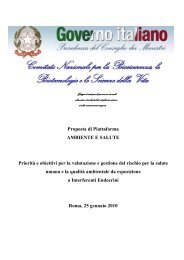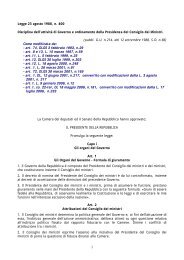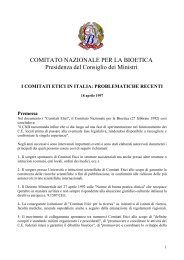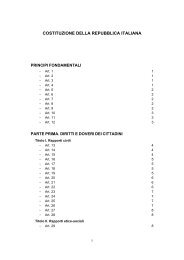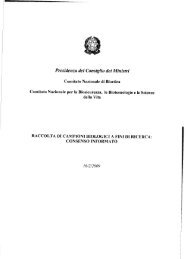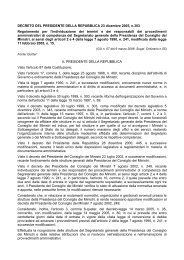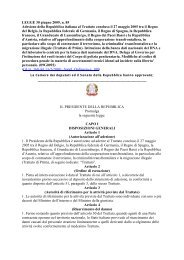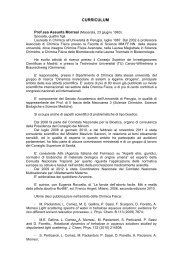President
President
President
You also want an ePaper? Increase the reach of your titles
YUMPU automatically turns print PDFs into web optimized ePapers that Google loves.
affected equally. After the disadvantage of having lost both the sexual<br />
hormones produced in the ovaries, as well as the precious DHEA, produced by<br />
the adrenal gland, it appears in all its strength: women are three times more<br />
likely then men to be affected in the knee, hip and hands. In about 25% of<br />
women, osteoarthritis increases incredibly quickly in the first two years after the<br />
menopause. Today we know that in this 25% of women there is an alteration in<br />
the oestrogen receptor, which seems to make them more sensitive to their lack.<br />
The fourth age of life, however, seems to be less sensitive to the lack of steroid<br />
hormones, almost as if the years bring a progressive adaptation.<br />
Thyroid illnesses, both in the sense of hyper as well as hypo-function,<br />
affect mostly women in a ratio of over 15 to 1. Drugs containing cortisone are<br />
also taken more by women, due to the high prevalence of auto-immunitary<br />
diseases, rheumatic illnesses, etc.<br />
We will mention anaemia only in passing, as it occurs in elderly women<br />
due to a lack of iron, vitamin B12 or folic acid (Andersen, 1996).<br />
Finally, there are pathologies which interest exclusively women:<br />
urogynecological disorders and changes in the pelvic floor (cystourethrocele<br />
and prolapse); vulvar pathologies, and female tumours (breast, uterus, ovaries).<br />
The lack of oestrogens after the menopause substantially contributes to the<br />
development of urinary tract infections (UTI) in elderly women. The incidence of<br />
UTI increases vertiginously with age. Repeated infections can affect elderly<br />
women, especially if they are already debilitated or suffering from neurologic<br />
pathologies associated to urination problems. Urogynecological pathologies in<br />
this age group can be one of its major problems, because it interferes<br />
considerably with the quality of life, although today the incidence of prolapse<br />
and cystourethrocele is considerably lower. Stress-incontinence, nocturia and<br />
pollachiuria, leading to urge incontinence, need specialist surgery and medical<br />
treatment and must not be ignored when it first appears. It is therefore<br />
necessary to make healthcare institutions more sensitive towards this, so that<br />
they can offer adequate information and services.<br />
A chapter should then be reserved to vulvar pathologies. As well as<br />
aesthetic and sexual issues linked to ageing, in old age there are in fact lesions<br />
which can only be identified with a biopsy.<br />
Finally, a frequent pathology in old age, both because of its incidence and<br />
as a cause of death, is cancer. In fact, the risk of getting cancer increases with<br />
age and about 60% of tumours affect people over 65 years of age. The<br />
correlation between tumours and age is due to a prolonged exposition to<br />
carcinogens.<br />
Female tumours (breast, uterus, ovaries) differ in their incidence according<br />
to the various organs and the histological chart. The cancer of the uterus<br />
appears mostly in old age. Breast cancer, the most frequent in women (even<br />
though it is less and less deadly thanks to early diagnoses and new therapeutic<br />
opportunities) affects, according to ACOG data (2003), 2% of 50 year-old<br />
women and 13% of 90 year-olds. Today, it is therefore recommended that<br />
women to start having mammograms at 40 years old and then repeat them<br />
every year for the rest of their lives. Ovarian cancer in elderly women is difficult<br />
to diagnose, so it is suggested that every cist, after the menopause, is<br />
removed. Elderly women are instead affected as much as men by lung cancer<br />
(smoke related) and cancer of the colon, as well as skin tumours.<br />
A chapter that must be tackled particularly delicately and carefully, and<br />
having access to services and treatments fully paid for by the State, is therefore<br />
242





